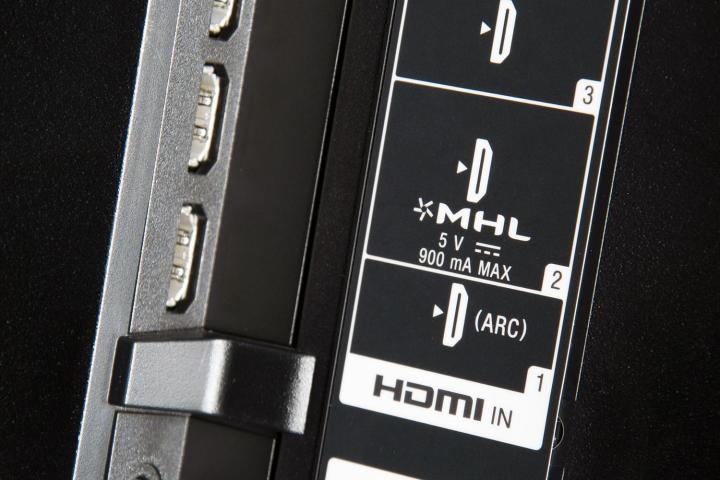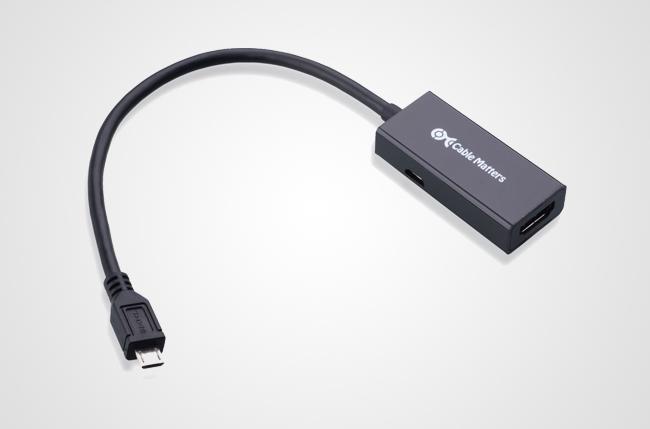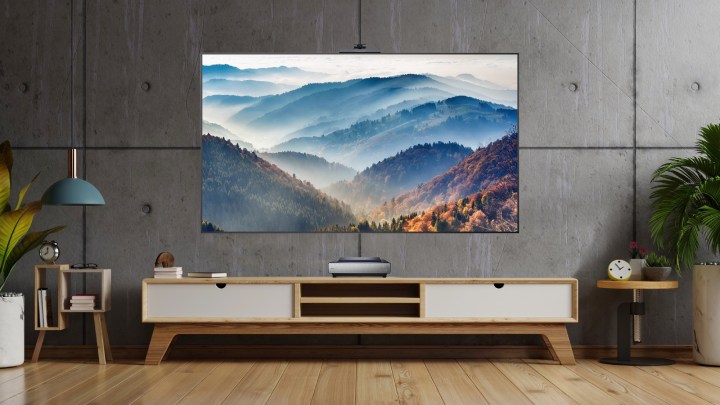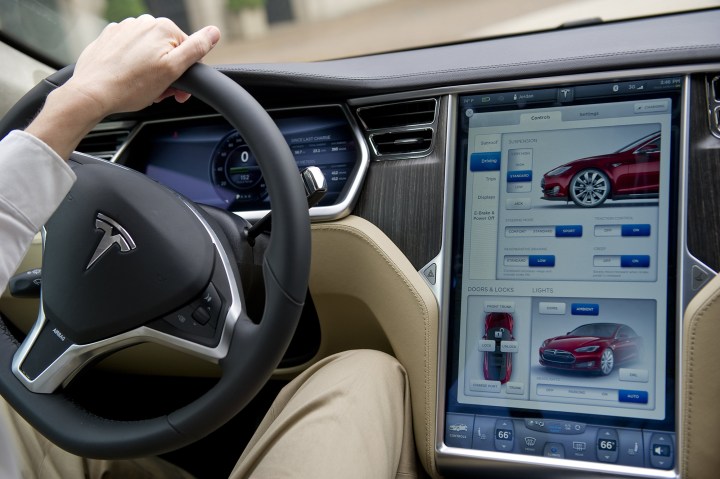Google Chromecast, Apple TV, and Roku devices allow you to wirelessly mirror your mobile display to your much-loved living room TV. But what if you don’t own a streaming device with mirroring capabilities? Is there a way to get your phone screen on your TV? Fortunately, there is, and it’s a little-known technology that’s been around for quite some time. Have you ever noticed three letters above certain HDMI inputs on your TV or A/V receiver? We’re talking about MHL, a wired protocol for getting your phone, tablet, or computer display up on your 4K TV. While not as convenient as wireless mirroring, MHL (for compatible devices) will get the job done — and the only thing you’ll need is an MHL-certified HDMI cable. Read on to learn more about MHL and how to use it yourself.
Note: Before you go ordering MHL equipment online, check to see if you can mirror your smartphone to your TV using the gear you already have at home.

What is MHL?
In 2010, a band of electronics companies, including Sony and Nokia, developed the MHL connection protocol. Short for Mobile High-Definition Link, MHL utilizes a special type of HDMI input on compatible TVs and A/V receivers to connect a growing list of smartphones, tablets, and other devices. The standard takes smartphone and tablet content to the next level, allowing you to showcase everything from your phone on your TV with a single connection.
Given the proliferation of wireless screen mirroring methods, MHL has fallen out of favor with many manufacturers, but you can still find plenty of televisions that support it.
How do I use MHL?
The most common way to connect for most people is to use an MHL adapter (such as the one shown below), which consists of a male Micro USB plug on one end and a female HDMI port on the other. If your phone hosts a Micro USB port, all you need to do is simply connect an MHL adapter to your phone, and run an HDMI cable from the adapter to the MHL-enabled HDMI port on your television (the correct port will be labeled “MHL”), and you’re all set.
If your phone or tablet does not host a Micro USB port, you’ll also need another adapter, which we’ll discuss in more detail in the next section below.

When MHL first launched, adapters like the one shown above were more or less the primary way to utilize the technology. Now, though, there are lots of different cables that support MHL, including direct Micro USB-to-HDMI cables.
The next step is simply plugging in your compatible device, which will allow you to display all of its applications, games, movies, photos, and music right on your TV, with resolution at 4K Ultra HD (and above).
Does my device work with MHL?

If you’re looking into MHL, you should make sure your device and display are compatible with the protocol by checking the official MHL site — found here — for a full list of supported devices. If your display device isn’t on the list, don’t bother buying an MHL adapter — it’s not going to work. If your display device is on the list, but your mobile device isn’t, there are some other ways to connect.
If you’re an Apple enthusiast, your iPhone or iPad does not have the correct output for the default MHL adapter or cable described above. Luckily, there are workarounds. This Lightning to Digital AV Adapter allows you to connect most iOS devices to your TV.
Newer Android phones have USB Type-C ports, rather than Micro USB. They’ll need to work with MHL ports. In the same vein, some compatible Samsung phones require a different (11-pin) adapter, as the default (five-pin) adapter won’t properly interface. However, be aware that these adapters won’t charge your phone like standard MHL, and they can be quite unreliable (we had a hard time finding any with positive review scores). Also, don’t accidentally purchase a Micro HDMI connection — that’s the wrong type of cable.
Why use MHL?
As mentioned, there are several wireless methods that work for mirroring mobile devices to bigger screens: Apple’s AirPlay for iPhones and iPads, for example, or Miracast for Android devices. And of course, Google’s Chromecast lets you stream video and audio from multiple apps. These methods don’t always offer the same level of video and sound quality as MHL, but the wireless connection is more convenient for many applications.
There are some cases where MHL would come in handy, though. The system is especially useful for those without cable or internet, for instance. In such a scenario (assuming you’ve got games or movies loaded directly on your phone), MHL essentially turns your phone and TV into a full-blown entertainment center, with no Wi-Fi required.
In addition, there are a few protocol-specific benefits that might make it worth going with MHL. First, MHL connections tout the convenient ability to transmit control data, which essentially means the remote that controls your display may also be able to control the connected device. For mobile gamers, MHL connection also offers zero latency, which allows for lag-free display of your device on your TV during the most rigorous of gaming sessions. The cable also charges mobile devices up to 40W without any subsequent lag while displaying the content.
Where else can I use MHL?
As we’re sure you’ve surmised by this point, MHL’s most useful function is to send data from a smartphone or tablet to a compatible TV or A/V receiver lag-free. But MHL also lets you plug your

By plugging a phone or tablet into a car with an HDMI input (or using some adapters to jury-rig a setup), you’ll have the ability to utilize up-to-the-second traffic reports, charge your device while commuting, and access your personal music library. The system gives easy touchscreen access to all content on your phone right through the infotainment center. Likewise, plugging a smartphone or tablet into a compatible computer monitor can turn your device into a workstation, one you can pair with a Bluetooth keyboard or mouse to create a (semi) functioning mini-office.
Another reason MHL is a viable choice is the fact that an adapter won’t cost you an arm and a leg. Adapters can run as little as $9 (or less), though you’ll still need a long HDMI cable — , which runs another $20 or so — unless you want to stand right next to the TV the whole time. Depending upon the adapters or cables you need, getting set up with MHL can cost anywhere from $10 to $50, which is pretty affordable any way you slice it.
So there you go. Now you’re ready to get down and dirty with MHL. Time to start streaming to that TV, latency-free!
Editors' Recommendations
- Best Vizio TV deals: Cheap smart TVs starting at $90
- Best 85-inch TV deals: Save on Samsung, Sony, TCL, and more
- The best soundbars of 2024: a sound upgrade for your TV
- Best TCL TV deals: 4K TVs as low as $150
- Best 65-inch TV deals: Get a 65-inch 4K TV for under $400





